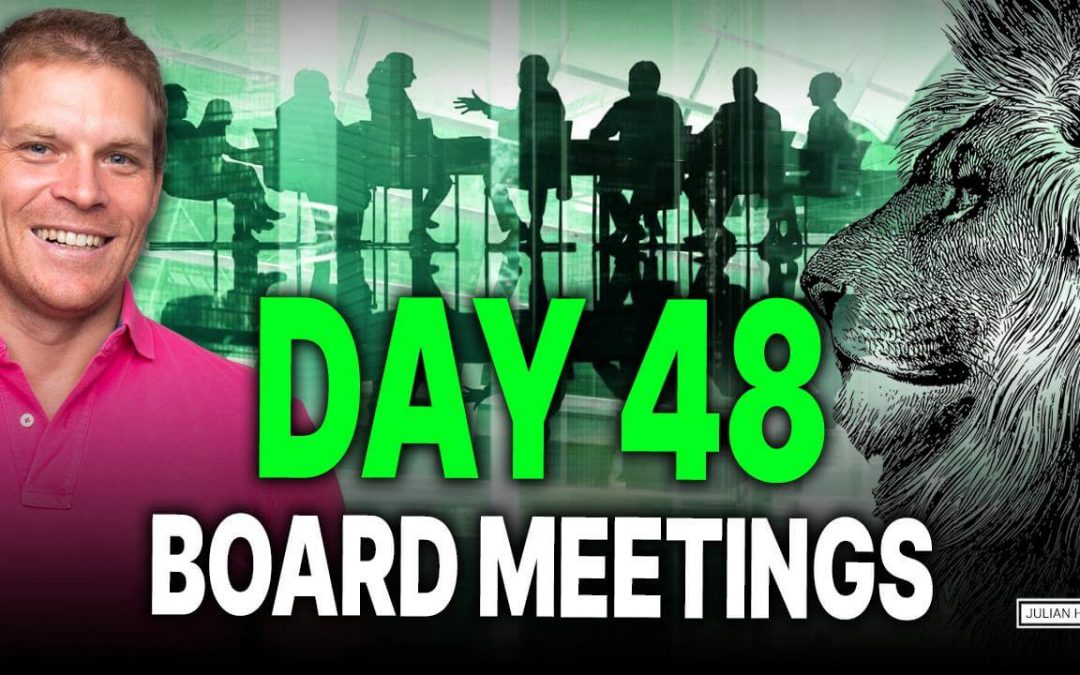Welcome to Day 48 and the second half of the 90-Day Challenge! Today, we’re discussing a topic essential for almost every company: Board Meetings. Who sits on the board of a company? What are its functions? And how do you conduct effective meetings? Let’s dive in.
What is a Board and Who Sits on It?
In many countries, especially in English-speaking structures, there are shareholders who own the company. These shareholders then elect a board, which functions like a company council. Typically, a board has three main functions:
- Strategic Direction: The board sets the general direction of the company. Is it about building a trading platform? Or is the focus on cash-to-crypto? Such big strategic decisions are made by the board.
- Hiring and Firing Key Personnel: The board hires the key functions of the company – CEO, COO, CMO, etc. It determines their compensation, bonuses, and also has the power to fire these individuals.
- Setting the Budget: The board sets the general budget for the company.
Who Should Be on the Board?
Usually, shareholders want to sit on the board because they hold a significant stake in the company and want to be involved in important decisions. However, it’s also possible to bring in external members. Often, I’m asked whether friends or advisors should be brought onto the board. My tip: Advisors are often more helpful than board members because they can advise but do not have decision-making power.
How Do Our Board Meetings Run?
Our board meetings are typically short and efficient. Here in Singapore, we had a meeting today at 2:30 PM that lasted about 10 minutes. Participation is confirmed, the agenda is approved, and then we briefly go through the main points. A typical meeting for us looks like this:
- Confirm Participation and Approve Agenda: We start the meeting by confirming attendance and approving the agenda.
- CEO Report: I present my report, we discuss the highlights, and clarify any questions.
- Finance Report and Other Key Topics: We go through the main points, such as the current financial status and upcoming decisions.
- Board Decisions: If necessary, decisions are made. Often, these are already pre-agreed as board resolutions.
- Conclusion: We confirm participation again and end the meeting.
What to Do When It Gets More Challenging?
Of course, there are also challenging board meetings. Sometimes these last three hours and involve heated discussions. But that’s also part of it. A good board meeting is one that is both effective and transparent.
Conclusion
Board meetings are an indispensable part of every company. They ensure clear structures, strategic directions, and transparency. If you have further questions on this topic, let me know. I look forward to starting again with you tomorrow. Take care and best regards!
Take part in our 90-Day-Challenge
If you want to take part in our 90-Day-Challenge and support us, now is the time to do so. If you’re an old customer who withdrew his funds, consider using our platform again. If you’re new – simply sign up here: https://bake.io
Your Julian
Entrepreneur / Investor / Athlete / Father


